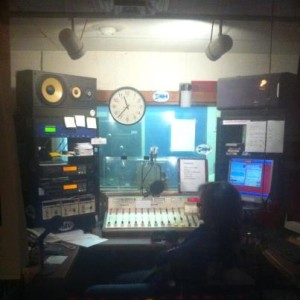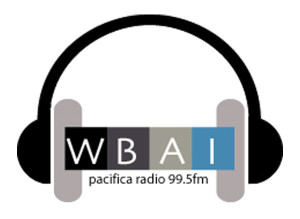NorthEast Radio Watch 11/18/2024: Sims Gets Yankees Callup
In this week’s issue… Yankees hire Dave Sims - Wallace, Maxwell move in NYC - Gray cuts news in Maine - Remembering CT's Pinto By SCOTT FYBUSH Jump to: ME - NH - VT - MA - RI - CT...
By SCOTT FYBUSH
We’re kicking off a big year in the history of NERW: the spring of 2014 will mark the twentieth anniversary of this column, and we’re planning a big celebration for all our loyal readers.
But before we get to the big two-oh, it’s time for our annual review of the year gone by. As we did last year, we’re bringing you Year in Review 2013 in a series of daily installments through New Year’s Eve, which we’ll collect on one page for archival purposes at the start of 2014.
Click here for Part 1: The Year in Station Sales
Click here for Part 2: Formats, People and Calls (January-June)
Click here for Part 3: Formats, People and Calls (July-December)
Click here for Part 4: Those We Lost
In this segment, we start our look at the top ten stories of 2013, as picked solely by your editor. Disagree with our choices? Have a comment? Come weigh in at the discussion boards on the RadioInsight Community. It’s where radio goes to talk radio, and we’re proud to be part of the team there!
[private]
After a tempestuous election year in 2012, talk radio was a little less controversial in most parts of NERW-land in 2013. The boycotts that caused headaches for Rush Limbaugh affiliates were less visible. Most of the hosts who set out to court publicity found it hard to come by: Dick Morris, for instance, thrived in his political career by making outrageous predictions – but in afternoon drive on Philadelphia’s WPHT (1210), where he replaced middle-of-the-road Michael Smerconish, Morris barely made a ratings blip, even after picking up Limbaugh himself as a lead-in and losing a direct FM competitor. In Buffalo, WBEN swapped shifts between Sandy Beach and Tom Bauerle, but couldn’t pull an audience young enough to avoid losing its FM simulcast. Jeff Katz decamped from Boston to try once more to make a name for himself down south, this time at Richmond’s WRVA. At Pittsburgh’s WPGB, “The War Room” with Jim Quinn and Rose Tennent was once the star attraction that helped establish the Clear Channel station as an FM talker – but when it came time for Quinn and Tennent to negotiate for a contract renewal, they couldn’t get enough from WPGB to make it worth sticking around, at which point they were replaced by the morning host from down the road in Wheeling, West Virginia.


Of course, that was in no small part because DePetro spent most of November and December off the air following a series of on-air jabs at union protesters that included a spate of name-calling sharp enough to draw threats of boycotts. Those boycotts involved not only advertisers but also politicians; by the end of December, most of the state’s Democratic establishment was pledging not to appear on any WPRO show until DePetro was fired, but there were even some Republicans joining in.
Good for WPRO? Bad for WPRO? We’ll see how it all plays out in 2014, and especially whether the politicians will be serious about staying off the airwaves during an election year. In the meantime, though, if the goal was to be noticed, WPRO and DePetro were among the few talk voices in the region who succeeded.
We’re very partial in this space to stories of successful small stations. We’ve watched from afar, for instance, as Brooks Brown built WEQX (102.7 Manchester VT) from scratch into an important independent modern-rock voice serving three states from high atop Mount Equinox – and we’re hopeful for the station’s survival after Brown’s death over the summer (his ashes were scattered next to the WEQX tower after his death, a fitting tribute indeed!)


At the other end of New England, 2013 brought the disappearance of another independent voice from the FM dial – and then the tantalizing prospect of its return. We knew as the year began that WMVY (92.7 Tisbury) was on its way to webcast-only status after the owner of its FM broadcast license on Martha’s Vineyard sold the frequency to Boston public broadcaster WBUR. On a storm-tossed night in February, WMVY said goodbye to 92.7 and kicked off a new life as a streaming-only service supported by its listeners – but for that storm that knocked out the net connections to the islands and at least briefly delayed the new MVYradio from starting its online existence.
After raising the money from listeners to buy its studio and equipment, MVYradio then did what few thought possible: it found a way to come back home to the FM dial. Dennis Jackson’s Vineyard Public Radio was all set to put WMEX (88.7 Edgartown) on the air with jazz, but when MVY needed a new FM spot, the deal was obvious: early in 2014, 88.7 will change hands to Barbara Dacey’s Friends of MVYRadio group, and the AAA sounds of island radio will be back on the FM airwaves where they belong.
As the year ended, it turned out MVY’s wasn’t the only good-news story out there: in the Hudson Valley, the nonprofit group running Kingston Community Radio faced the loss of its over-the-air voice when Pamal abruptly announced it was turning off WGHQ (920 Kingston) at the end of December. But KCR found a savior in the form of Marshall Miles and his Robin Hood Radio: the little public broadcaster based just over the state line in Connecticut struck an eleventh-hour deal to get Pamal to donate the WGHQ license and facilities, allowing KCR to stay on the air in its morning timeslot and giving Robin Hood’s WHDD a new voice into the upper reaches of the valley.
For how many years now have we included a line in the Year in Review that went something like this – “And the Yankees and Mets each struck one-year renewals with their existing flagships, leaving us all waiting to see what sort of longer-term deals the teams might make with new flagships”?


It means WFAN won’t be splitting its AM/FM simulcast any time soon: the team apparently very much wanted both the FM presence and the 50 kW clear-channel AM reach, and in order to reap the benefit of that simulcast under Nielsen Audio’s rules, WFAN has to remain in AM/FM tandem 24/7. That, in turn, means CBS Sports Radio won’t be getting the New York AM home it had hoped for, at least not at 660.
And of course it also meant the current baseball occupant at WFAN, the Mets, had to be sent packing after an association with WFAN that went all the way back to WFAN’s beginnings on 1050 (and even before that, to its predecessor WHN). The Amazins had been the first beneficiaries of the AM/FM simulcast on WFAN, but their new home turned out to be AM-only: instead of signing with WFAN’s sports competition, ESPN Radio’s WEPN (98.7), the Mets signed on with Clear Channel’s WOR (710). That touched off some even bigger changes at WOR, which we’ll explore later in our top-10 list…
…but not, of course, before noting the other big piece of baseball news from NERW-land, up at Fenway Park late one October night. The Red Sox’ stunning worst-to-first championship provided a rare bit of good news in what was otherwise a miserable year for Sox flagship WEEI-FM (93.7) and the Entercom cluster that surrounds it.
Where to begin? Just down the hall at WRKO (680), the stars should have aligned for a better-than-decent year. After a decade spent fending off in-format competition, WRKO started 2013 with talk all to itself in Boston: no more FM flanking from Greater Media’s WTKK, Rush Limbaugh back in place after a detour up the AM dial to Clear Channel’s ill-fated WXKS (1200), and Howie Carr’s contract firmly binding him in place in afternoon drive. In an off year for most politically-driven talkers, WRKO had a Senate race, a House race and the first really competitive Boston mayoral race in decades to talk about. And for all that, “THE Talk Station” could barely move the needle in ratings or revenue.


It took another couple of years for Entercom to take the next step: 2013 was the year that WEEI began shedding air talent and even managers in an attempt to find something new that would work. Glenn Ordway’s ouster in April was the first big sign that things were changing at 20 Guest Street, and it was followed later on in the year by the exits of Pete Sheppard and, most dramatically, PD Jason Wolfe, not to mention the decision not to bid on a renewal of the Celtics basketball play-by-play contract, which headed down the street to the Sports Hub.
Even with the influx of new programmers (from Salt Lake City) and talent (Mike Salk, from Seattle, albeit with Boston roots) and that World Series victory, WEEI ended the year mired firmly behind WBZ-FM in ratings and revenue. While there’s no reason to believe the December Herald rumor of 93.7 flipping to an all-ESPN lineup, it’s hard not to believe something’s going to give at WEEI sooner or later: that mammoth ten-year deal back in 2006 between the Sox and WEEI looks pretty good in hindsight after two Series trophies, but it has just two more seasons left to run. Where will the Sox go after the 2015 season, and what will that mean for Boston’s original sports voice?
And then there’s WAAF: the FM rocker, operating on a simulcast pair of two signals, never ranks especially high in the ratings, but it’s also not burdened with wildly expensive talent and it attracts a young male audience that’s attractive to advertisers and hard to pull anywhere else on the dial, making it arguably the most successful part of an otherwise struggling cluster.
One of the challenges for even a fairly sizable operator like Entercom is the way in which big-market radio has become such a relentlessly big-dollar game. Even with station values off the crazy peaks of a decade ago, it takes deep pockets to sustain a station with a stick value of $70 million or more – and even deeper pockets to compete successfully against companies like CBS Radio and Clear Channel that have assembled clusters of four or five such signals in top-ten markets.
So it’s been remarkable that even a handful of standalone operators have continued to make a go of it well into the 21st century with big-market, big-signal FMs – and less remarkable, perhaps, that 2013 saw the end of two of them, the potential end of a third and some big changes at one more.


“Nash” wasn’t built to be a ratings juggernaut, just to be a market-one beachhead for Cumulus’ dream of creating a national media brand that will include live concerts, a magazine and nationwide morning and nighttime radio shows. By year’s end, WNSH was well on its way, with a new studio in Nashville piping a morning show back to New York and sending programming out to dozens of other “Nash” FMs around the country, too.
The second big independent FM to fall was in Philadelphia, where Randy Michaels’ Merlin Media had made a big splash with another signal purchased from Family Stations. The former WKDN-FM (106.9 Camden NJ) became talker WWIQ, and for a while, “IQ106.9” took aim at the Philly talk landscape with a mix of big national names (Limbaugh, Hannity, Beck) and provocative local morning hosts.
As 2013 dawned, though, WWIQ was struggling. Its remaining local voices left – first founding morning host Al Gardner and then his co-host, Lionel. Merlin’s original plan of feeding news to affiliate stations such as WWIQ from a news hub at New York’s WEMP (101.9) was already history after WEMP was sold off in 2012. By July, the local morning show had given way to a simulcast of Don Imus from New York’s WABC, and by fall WWIQ was history. Merlin sold 106.9 to EMF Broadcasting, the fast-growing California religious broadcaster with a seemingly unlimited reserve of funding for new “K-Love” and “Air 1” signals, and Limbaugh went back to his former home, CBS Radio’s WPHT (1210), while Beck and Hannity were shuffled to lesser AM outlets.


That left just a few other standalones standing alone. At the edges of the Boston market, Steve Silberberg’s WXRV (92.5 Andover) and Laurie Campbell’s WPLM-FM (99.1 Plymouth) were as stable as could be. Pittsburgh’s Saul Frischling isn’t quite a stand-alone, since his Steel City Media has two FMs (WLTJ 92.9 and WRRK 96.9), but his stations remained independent and interesting, especially on their many HD subchannels. In slightly smaller markets, Marlin’s WCCC (106.9) kept rocking in Hartford, Brown Broadcasting’s WBRU (95.5) added some student spice to the FM dial in Providence, and the Langston family’s WDKX (103.9) stayed near the top of the Rochester ratings.
And then there’s the last standalone FM in New York. “Troubled” and WBAI (99.5) may as well share a dictionary entry at this point. The Pacifica station’s long history has been checkered for almost four decades now by internal turmoil and financial struggles. Even by that standard, 2013 was a rough year for WBAI. After hemorrhaging money for years on expensive studio space in a Wall Street skyscraper that was damaged by Hurricane Sandy, WBAI found itself behind on the rent there and at its Empire State Building studio space. A deal to vacate the studio left WBAI temporarily homeless, borrowing studio space way uptown in Harlem at WHCR (90.3) while trying to raise funds to build out a new studio in Brooklyn.


Even here, Pacifica’s still Pacifica: its conditions for the PSOA were so one-sided (including airtime for Pacifica’s own programming and pay for Pacifica program staffers) that it appeared by year’s end that no suitable partner had come forward, leaving 2014 as yet another year of uncertainty for troubled old WBAI.
In the next installment of the Year in Review, coming Tuesday morning, Dec. 31, we’ll continue counting down the year’s top ten stories! Join us again right here on fybush.com…


The 2014 Tower Site Calendar is ready to send for YOU (or someone else), spiral bound, shrink wrapped and best of all, with a convenient hole for hanging!
This year’s pinups include the iconic towers of Catalina Island, a combiner system in St. Louis, the twin towers of KNRS in Salt Lake City, a historic rooftop site in Jamestown, New York and many more!
Click here to order your 2014 calendar! We’re now shipping daily, so you can have your calendar on your wall before it’s time to flip the page from 2013 into 2014…
In this week’s issue… Yankees hire Dave Sims - Wallace, Maxwell move in NYC - Gray cuts news in Maine - Remembering CT's Pinto By SCOTT FYBUSH Jump to: ME - NH - VT - MA - RI - CT...
In this week’s issue… iHeart axes Boston, NYC morning shows and more - Cumulus cuts in central PA - Southern Tier combo saved from silence - Ottawa FM relaunches - K-Love buys in the Burgh - Scranton gets "Loud" -...
In this week’s issue… "Hot" cools down in Providence, CT studios closed - GBH to sell Cape studios - A HEBA in Hamden? - New HDs in New York - Another Canadian AM to close
In this week’s issue… GBH shuffles mornings, prepares new show launches - NYSBA inducts Hall of Famers - More news-talk in the Hudson Valley - Remembering Dan Sys